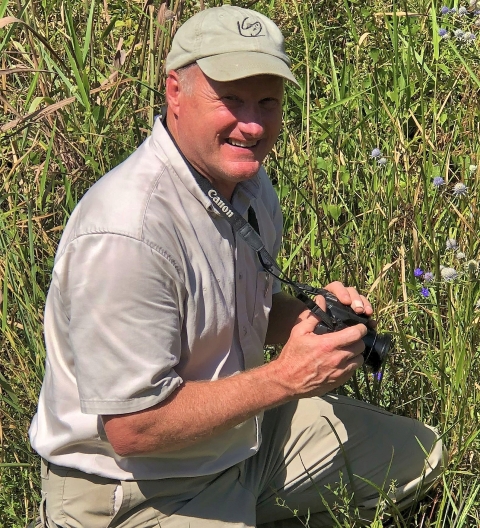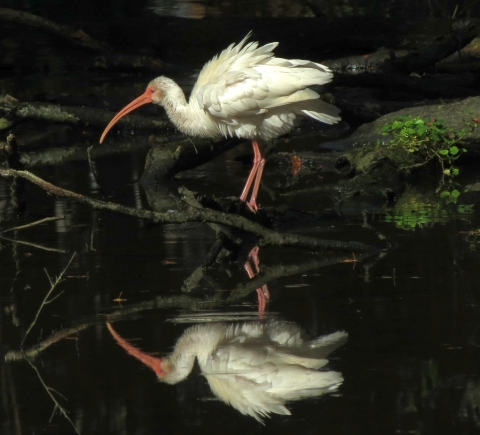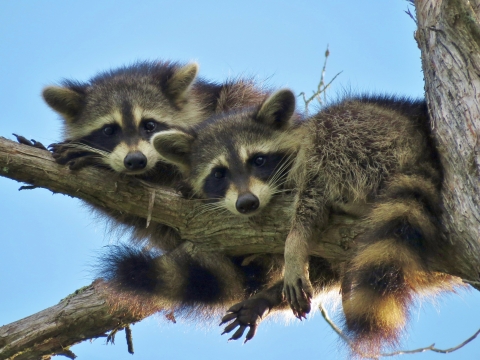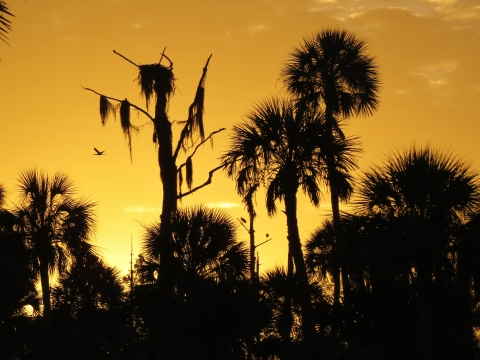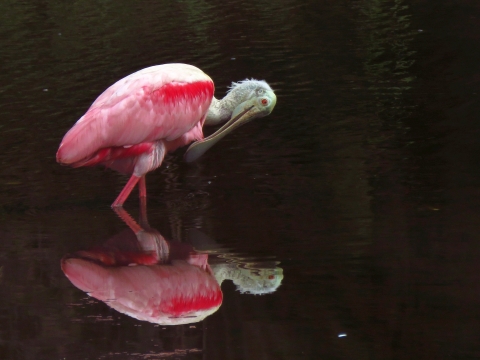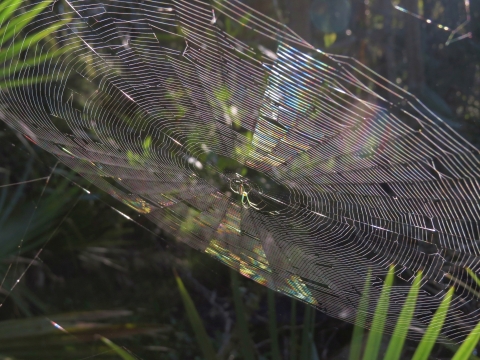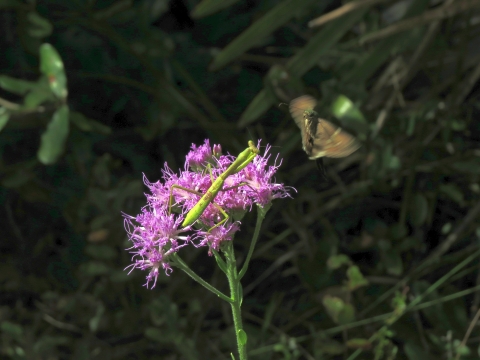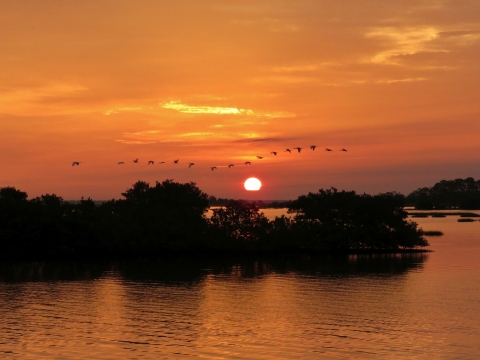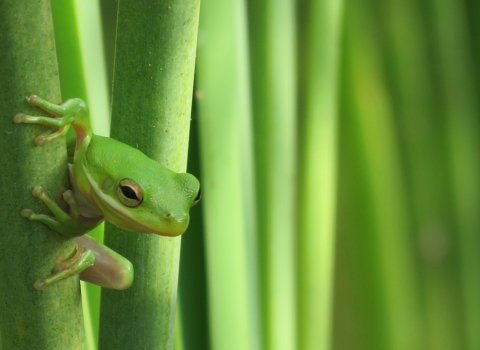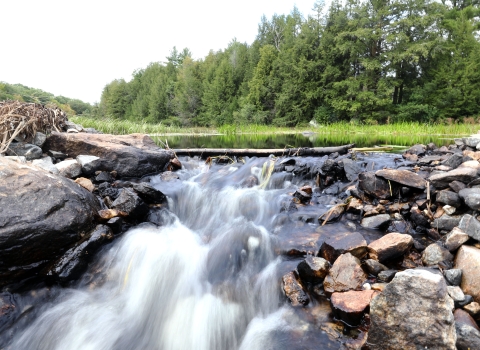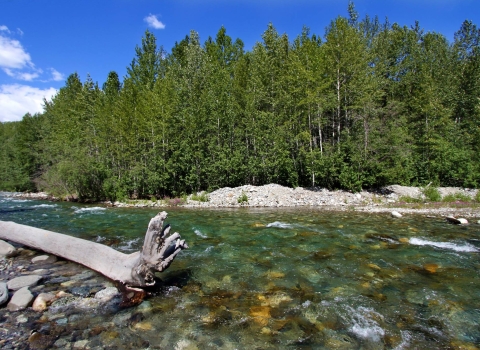Larry Woodward is deputy manager and wildlife biologist at Lower Suwannee National Wildlife Refuge and Cedar Keys National Wildlife Refuge along the Gulf of Mexico in northwest Florida.
He is also a wonderful photographer whose camerawork celebrates and documents the two refuges’ mainland and island flora and fauna.
“Wildlife photography has become a passion of mine that I have shared with my special-needs daughter, Roland,” Woodward says. “On a weekly basis, we are together, both with camera in hand, photographing wildlife.”
Of the photo above, Woodward says: “Passing by this remote island sanctuary, I was first captivated by the diversity of shorebirds along the shoreline. While we drifted to a stop, the shapes and color contrasts of the beach, water, grasses, blooming morning glories and the palmettos silhouetted against the cloudy horizon justified a quick photo.”
Here are some more of Woodward’s favorite photos and a bit about how and why he took them.
“When I catch a glimpse of something white along the bank of a dark swampy opening, one thing typically comes to mind: ‘Game on.’ I slowly crawled through the brambles in hopes of not spooking my mystery subject. As my view became unobscured, I was pleasantly surprised to find a lone white ibis in his entire splendor, preening and reflecting.”
“Looking up as I lollygag through a swampy wonderland, I am often rewarded with the discovery of curious eyes glaring back. In this case, I found a mama raccoon with three playful young ’uns learning how to be raccoons. I quickly found a place to enjoy the frolicking quartet clambering up and down a large oak tree. Two of the little bandits decided to take a cozy break that seemed deserving of a glamour shot.”
“Being one of those questionable people who are up before sunrise every day, I highly anticipate witnessing God’s opening act. As nocturnal animals begin to seek their hideaways, simultaneously the birds launch into a chorus of glory calling to the new day. This morning was no different, but a new gold standard was set.”
“The pink adornment of the roseate spoonbill cannot be duplicated, not even by the craftiest of artists. Spoonbills are a photographer’s dream subject. I adore all wildlife and all of their intricate details. So to place myself in a position to highlight my subject with a dark background, I feel that I can give the subject as much justice as a mere photo can give.”
“Not only is the orb-weaver spider’s web masterfully made, but its engineering is a work of perfection. When I spot the glistening of an early morning web, whether covered in dew or reflecting soft light, a picture surely will soon follow. To cite legendary conservationist Aldo Leopold: The last word in ignorance is the man who says of an animal or plant: What good is it? ”
“I like to pay close attention to the world according to the flower patch. In this case, I spotted a praying mantis strategically hiding near an ironweed flower. And looky here, the mantis’s patience is going to pay off. Woohoo. Not so fast, Mr. Stick Man. This long-tailed skipper butterfly is smarter than you give her credit. Ms. Skipper slams on the brakes, hits the flux converter, and she’s out of there, safe and sound.”
“As you know by now, I cherish sunrises. This morning I was at Cedar Keys National Wildlife Refuge, and I was not disappointed. I watched flock after flock of white ibis leaving Snake Key, the refuge’s 16,000-bird strong wading bird and seabird rookery. These white ibis fly miles inland, leaving their saltwater rookery to feed in the freshwater swamps and wetlands largely within Lower Suwannee National Wildlife Refuge.”
More photoGRAPHY tips Visit a national wildlife refuge


